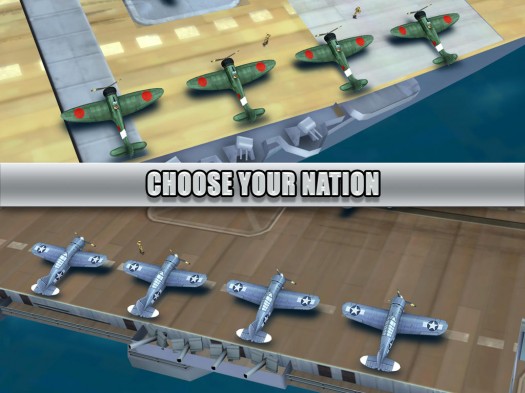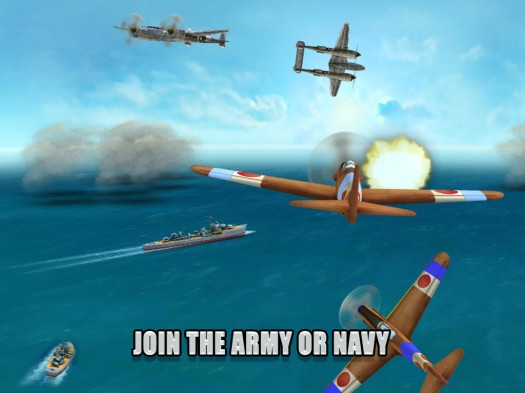![]() Earlier this year, 2K Games dropped a really cool little turn-based strategy game called Sid Meier’s Ace Patrol (Free) on iOS. Like many, we loved it, but quite a few people were disappointed with its pricing model. Ace Patrol was free to play, offering a portion of a campaign with the remaining campaigns sold separately. I get the impression that part didn’t bother people too much, but there were other IAP lurking that had some people wishing the game just included everything, with no IAP, at a premium price. Well, Ace Patrol is and probably always will be a free-to-play game, but the follow-up is here, and 2K Games seems to have heard the message, loud and clear.
Earlier this year, 2K Games dropped a really cool little turn-based strategy game called Sid Meier’s Ace Patrol (Free) on iOS. Like many, we loved it, but quite a few people were disappointed with its pricing model. Ace Patrol was free to play, offering a portion of a campaign with the remaining campaigns sold separately. I get the impression that part didn’t bother people too much, but there were other IAP lurking that had some people wishing the game just included everything, with no IAP, at a premium price. Well, Ace Patrol is and probably always will be a free-to-play game, but the follow-up is here, and 2K Games seems to have heard the message, loud and clear.
Sid Meier’s Ace Patrol: Pacific Skies ($4.99) is a rare reversal of recent trends. We’ve seen lots of games go from a paid model to a free-to-play model with their follow-ups, like Real Racing 3 (Free) and Where’s My Water 2 (Free), so it’s kind of interesting to see 2K Games going against the grain here. The removal of the IAP has surprisingly little effect on how the game plays out, though the most frequent complaint of the first game, injured pilots, has been addressed. The other major change here is, of course, the setting, shifting from the First World War to the Pacific Theater of World War Two. This also has surprisingly minimal impact on the game. As a result, in spite of a couple of seemingly important changes, this feels more like a mission pack than a sequel, and not a terribly ambitious one, either.
In case you aren’t familiar with the original game, Ace Patrol is a turn-based strategy game that uses planes as the units. You have your own little squadron of four pilots, and they can be leveled up by shooting down enemy targets. As they gain levels, you can choose from a variety of new maneuvers to add to their repertoire. You’ll also unlock new planes by proceeding through the missions, and good performance will grant you a valuable upgrade part you can use as you see fit. As strategy games go, this one is pretty light in terms of complexity, and it offers a wide range of difficulty settings, so it’s all very easy to learn and accessible regardless of your skill level at this genre.
That’s not to say there isn’t some depth behind the tactics in this game, but it does a good job of keeping that depth hidden behind a user-friendly veil. Things like G-force, altitude, direction, and more factor into what each unit is capable of at any given time, but the game generally leaves discussion of that stuff off to the side in favor of showing all of your available actions as easily-understood arrow icons. Terrain effects are limited to clouds, which provide cover to both you and your enemies, and team-specific damage tiles in the form of battleships and anti-aircraft guns. It’s all very pick up and play, and I feel that’s one of the key strengths of this series.
 Veterans of the first game aren’t going to find anything new in the battles, though. The change of setting might as well be a new coat of paint, and even though plane technology was pretty different in WWII compared to WWI, you’ll still have access to the same types of maneuvers, even if they don’t make quite as much sense with the change in the lineup of planes. Missions also maintain similar objectives. Sometimes you have to wipe out the enemy planes, sometimes you have to take out a specific unit, sometimes you have to attack a stationary target.
Veterans of the first game aren’t going to find anything new in the battles, though. The change of setting might as well be a new coat of paint, and even though plane technology was pretty different in WWII compared to WWI, you’ll still have access to the same types of maneuvers, even if they don’t make quite as much sense with the change in the lineup of planes. Missions also maintain similar objectives. Sometimes you have to wipe out the enemy planes, sometimes you have to take out a specific unit, sometimes you have to attack a stationary target.
Naturally, with the shift in setting, you’ll also be choosing from a different set of countries. This being the Pacific Theater of WWII, there are only two countries available: Japan and the USA. Perhaps in an attempt to add a little variety, each country has a campaign for their Air Force and Navy, which will determine which planes will be available to you. It works out to the same number of campaigns and about the same number of missions as the original game ended up being, so it’s pretty close in value to the first one in terms of how much content you get for your money.
Each campaign is broken up into battles consisting of a handful of missions. These groupings are significant because the end of a battle represent an important passage of time for your units. Like the first game, if your pilots go down in battle, there are consequences. If you’re over your own territory, the pilot is injured and will have to sit out until you finish the current set of missions. If you’re over enemy territory, the pilot will be captured and you will have to stage a rescue mission to get them back. New to this game is that damage to your plane persists through each set of missions. Your planes will get fully repaired after each set, but you have to be careful not to rely too much on any one plane, because even the best of them are going to take hits, and they will add up. Luckily, if you have other planes available, you can just switch your pilot into them, but chances are, they’re going to be less powerful than whatever plane you were using, so it’s not a perfect cover for messing up.
 The challenge is in balancing your small group well. You don’t want anyone to fall too far behind in levels nor do you want any one plane taking too much damage, so you’re encouraged to juggle around who you take into each mission. Losing a pilot means losing a full quarter of your options for the next few maps. It’s a weighty consequence that ensures you’ll pay attention to what you’re doing. You can, of course, make it more weighty if you like, because another new element this time around is the option of perma-death. Perma-death is pretty interesting in Pacific Skies. When a pilot goes down, you don’t have to wait for them to recover because, well, they’re dead, so their spot on the roster is instantly refilled. That means you’re never short-handed in terms of manpower, but that fresh new recruit that filled the spot? Level one, no abilities, have fun getting him or her caught up. It’s a great little twist for players who want a little bit more bite.
The challenge is in balancing your small group well. You don’t want anyone to fall too far behind in levels nor do you want any one plane taking too much damage, so you’re encouraged to juggle around who you take into each mission. Losing a pilot means losing a full quarter of your options for the next few maps. It’s a weighty consequence that ensures you’ll pay attention to what you’re doing. You can, of course, make it more weighty if you like, because another new element this time around is the option of perma-death. Perma-death is pretty interesting in Pacific Skies. When a pilot goes down, you don’t have to wait for them to recover because, well, they’re dead, so their spot on the roster is instantly refilled. That means you’re never short-handed in terms of manpower, but that fresh new recruit that filled the spot? Level one, no abilities, have fun getting him or her caught up. It’s a great little twist for players who want a little bit more bite.
Like the first game, Pacific Skies offers a wide variety of difficulty settings, covering everyone from players who just like to move their planes around and win to the people who should be in an insane asylum or a real war planning room for how well they’re able to predict the enemy’s moves. The AI is quite crafty on the higher difficulty levels, so don’t let the breezy challenge of the first couple of difficulty levels fool you as to this game’s potential. If the AI somehow isn’t challenging enough, you once again have the option to take to the multiplayer skies via hot-swap or online matchmaking for a little two-player action.
Given the short time period between the first game’s release and this follow-up, it’s understandable that the tea table hasn’t been up-ended in terms of gameplay, but prospective buyers should be fully aware that you’re buying into a new visual theme and a bunch of new missions that follow very much in the same lines as the ones in the first game, and not much else. Ace Patrol was no slouch in terms of mission content, so it’s hard to say whether players are chomping at the bit for more of the same so soon. That said, if you were one of the people who liked the gameplay in the first game but couldn’t get behind the free-to-play model, here’s your chance to vote with your wallet and get a completely IAP-free Ace Patrol in exchange for some of your hard-earned cash.
I suspect most people will be more than satisfied with just one of the two games, but for the diehards and gamers who missed out on the first one, Pacific Skies is the one to get.

